Technology
The Evolving Smartphone Scenario In India: What Are Indians Doing With Their Phones?
Harrshit Varma
Mar 14, 2018, 06:43 PM | Updated 06:43 PM IST
Save & read from anywhere!
Bookmark stories for easy access on any device or the Swarajya app.
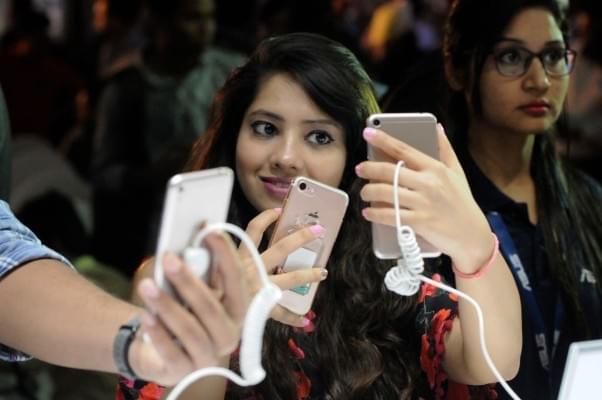
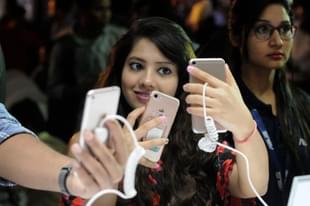
India is surging ahead. Shackled for decades, the Indian economy is now growing at a rapid pace. And as the country’s middle-income group makes giant strides, connectivity has become the buzzword for an upwardly mobile young population.
Technology too has played its role, ensuring that the young Indian has the entire world wide web within their reach – through, of course, the smartphone. Here, we look at how India’s mobile phone market is evolving and what Indians are using their smartphones for.
Although it might seem like nearly everyone has a smartphone in India, the reality is different. Feature phones still trump smartphones with over 65 per cent market share of the total mobile phones in a cost-conscious market. India has already crossed the gigantic 700-million mark in the total number of phones in use across the country. However, the share of smartphones is growing as technology increasingly brings its price within the reach of the common man.

In contrast, the Chinese smartphone market share is expected to touch 59 per cent, and that of the United States (US) is expected to be some 87 per cent by the end of the year. In any case, India is already the second-biggest smartphone market by size after China, overtaking the US last year.
What do these millions of users – many of them first-time internet users – use their smartphones for?
Indian smartphone users are certainly spending a lot of time on their mobile phones. Even the least active smartphone user tends to spend about 90 minutes on their phones daily, while the most active one spends anywhere over four hours on the gadget. The mean usage is approximately 2.5 hours.
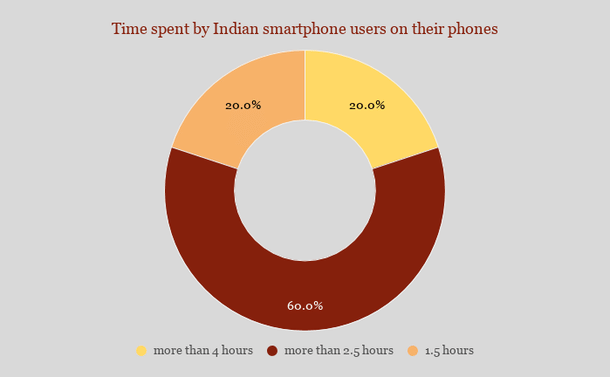
In terms of smartphone usage, India slots in only behind countries like Japan, South Korea, Brazil, and Mexico, where the gadget is used for close to five hours a day. The least active ones use their smartphones for sending messages over internet platforms like WhatsApp.
Indians are using their smartphones for a variety of activities – social media being the the common application across the entire smartphone demography.
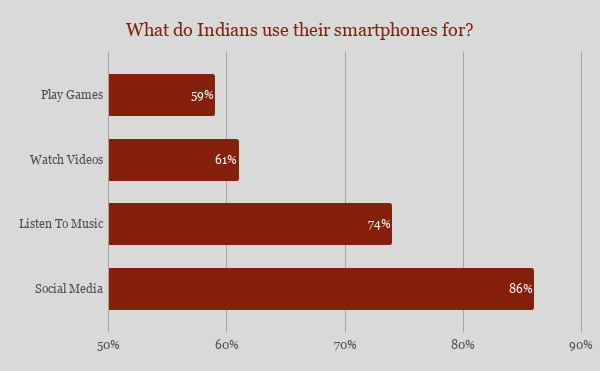
Within social linkages too, smartphones are increasingly becoming a tool that Indians are using to connect with the community. The government is becoming more responsive to social media outreaches too, which is spurring the use of smartphones to engage with the government.

Indian smartphone users are also feeling more independent and confident because of their smartphones. Over 50 per cent of them feel that their smartphones have helped them access better economic opportunities.
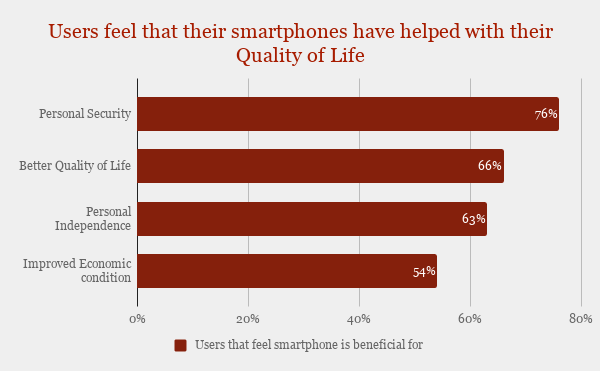
The extent of smartphone use in India can be inferred from the fact that seven out of 10 users feel lost without their smartphones. Also, 69 per cent of the users reach for their smartphones within half an hour of waking up. However, the usage is at a maximum during office hours (42 per cent) and then at night (38 per cent).
In addition, Indians have also reported a shorter smartphone replacement cycle than the global average. Indian smartphone users replace their devices at an average of 20 months, a month lesser than the global average.

Even with close to 300 million smartphone users in India, there is a feeling that the gadget revolution is yet to come. Technology has been a great enabler for the English-speaking masses thus far and is poised to revolutionise the as yet untapped vernacular market too. An increasing number of Indians has greater faith in vernacular content rather than the English-language media and that is the market that the industry wants to address. When that happens, Bharat will have its smartphone revolution of sorts.
Harrshit is a senior sub-editor at Swarajya.





